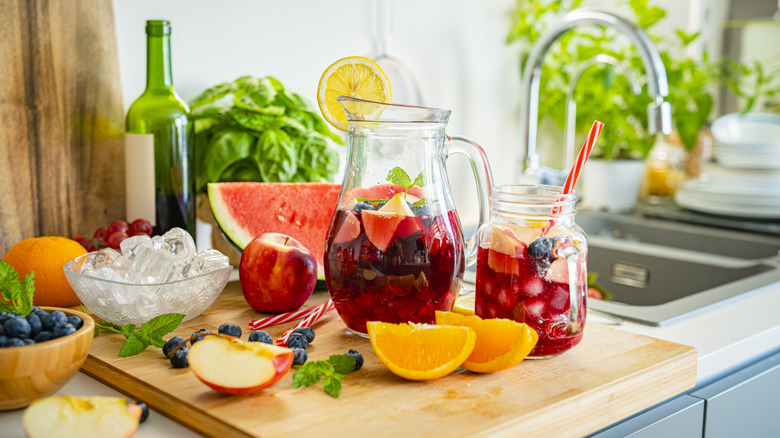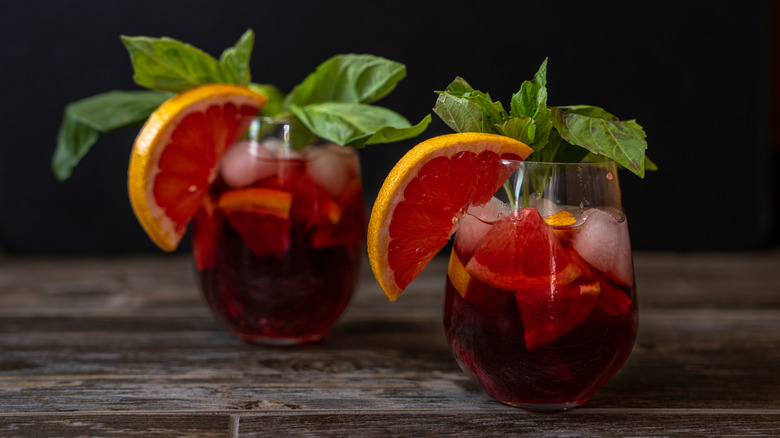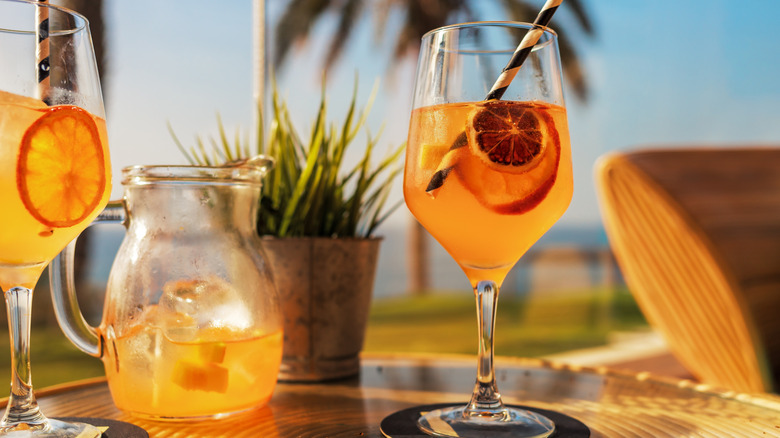What Wine Should You Use When Making Sangria?
Summer may be coming to an end, but sangria season is still in full swing. A fruity, refreshing pitcher of sangria always hits the spot, and makes a great crowd-pleaser for parties and outdoor get-togethers. The basic components of sangria are simple: wine, fruit, and fruit juice mixer. Beyond that, it's up to you which flavors you want to highlight and what additions you want to add to spice it up (like bourbon, which gives your drink a rich twist).
If you're new to sangria, you might be wondering which wine you should use as your base. There are two main types of sangria: traditional sangria uses red wine, while the more recently popularized sangria blanca uses white wine. The rule of thumb for purchasing sangria wine is frugality, as the wine will be doctored with so much sugary fruit juice and flavorful spices that there's no need to reach for a top shelf bottle. That being said, don't choose a bottle so cheap that you wouldn't drink it on its own.
Beyond price, region is also important to consider when selecting a sangria base. Since sangria originates from Spain, it's highly recommended that you choose a Spanish red wine, like tempranillo, garnacha, or another rioja varietal. Or if you're opting to make a sangria blanca, a dry Spanish white, like a Verdejo from the Rueda region, is best — though any crisp, fruity white will do the trick.
For red sangria, stay away from heavy tannins
A juicy, chilled red sangria tastes great on a warm day, but because it's a drink best served cold, make sure to select a base wine with low tannins. Tannins are the bitter compounds that give some red wines a heavier mouthfeel (and also act as a preservative). Wines made from grapes with thicker skins, like cabernet sauvignon or merlot, are typically much more tannic than ones made from thinner-skinned grapes, such as pinot noir. Chilling very tannic wines makes the tannins taste more metallic and emphasizes the dry-mouth sensations they produce, none of which you want in your fruity sangria.
For that reason, it's best to select a light- to medium-bodied red wine that could be chilled on its own. If you want to honor tradition, stick to the drink's Spanish roots by selecting a wine from the Rioja region of Spain. Rioja is arguably Spain's most famous wine region, with a rich history and a prolific production of blends made from tempranillo and garnacha grapes. Other Spanish or Portuguese wines are perfectly acceptable as well, and if region is less important to you than ease of accessibility, any light- or medium-bodied red wine blend under $30 can be used to make a delicious sangria.
Keep white sangria light and bright with a crisp wine
White wines tend to be crisper and more floral than reds, with notes of citrus, stone fruit and green apple recurring across varietals, which makes them perfect for a summery sangria. When choosing a wine for your cocktail, stay away from fuller bodied varietals like chardonnay, which tend to be described as buttery or creamy, especially when grown in warmer climates or aged in oak barrels. Instead, opt for lighter bodied, fruity wines that aren't too sweet, like a pinot grigio or sauvignon blanc, or even a budget white blend. Though some less experienced wine drinkers may equate sweetness to fruitiness, they are two distinct descriptors, and many dry wines are quite fruit-forward. Bonus points if you find a great Spanish white, like a verdejo or a rioja blanco, with the right acidic flavor profile.
Many sangria drinkers like a little sparkle in their drink as well. If you're one of them, try swapping out regular white wine for cava, the Spanish sparkling wine that's similar to Champagne. You can make a refreshing, bubbly sangria with cava, orange juice and orange liqueur— no seltzer needed!


